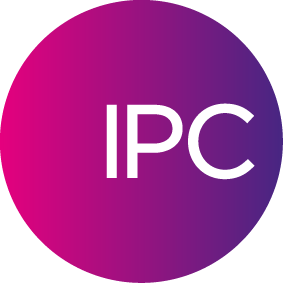By Patrick Chambeau, Director of Marketing, IPC
Amsterdam was the venue of my first FISD 2018 conference, after I attended the Euronext conference in Paris earlier in January and IPC’s customer events in Switzerland. Europe’s signs of growth are encouraging, even if we still see volatility in the markets. Financial professionals think in the medium-term and are confident about the dynamic and proactive business landscape in Europe.
This FISD conference, as always, was a dynamic gathering of 120 senior executives representing asset managers, large investment banks, liquidity venues, exchanges, technology vendors, market data providers and specialists, to address an increasing demand for data in the market.
First of all, listening to the discussions during the conference, it appears that Alternative Data is a relatively new topic.
How could we define Alternative Data?
Alternative data in the financial industry generally refers to data used to obtain insight into the investment process. These data sets are often used by hedge funds managers and other institutional investment professionals. Alternative data sets are information about a particular company that is published by sources outside of the company, which can provide unique and timely insights into investment opportunities.
Alternative data sets are often categorized as big data, which means that they may be very large and complex and often cannot be handled by software traditionally used for storing or handling data, such as Excel.
An alternative data set can be compiled from various sources such as financial transactions, sensors, mobile devices, satellites, public records, and the web. This is different from data that is traditionally used by investment companies such as investor presentations, SEC filings, and press releases. These examples of “traditional data” are produced directly by the company itself.
Since alternative data sets originate as a product of a company’s operations, these data sets are often less readily accessible and less structured than traditional sources of data.
- What were the 4 key issues discussed by C-level professionals and market data heads?
As I wrote in previous papers, there is still an increasing demand for data within our industry. Specifically:
1. Where are we with MiFID II?
- In the early days of MiFID II, less than one month after it came into effect, some initial comments :
- The first day of MiFID II regulation 2018 was a bit underwhelming.
- Transparency is a journey
- Is the MiFID II market data landscape too fragmented for transparency?
- More roles within a company are now involved in market data
- There are pockets of transparency but it is still too early to assess
2. How can technology help?
- It’s important to understand structured and unstructured data and alternative forms of data, as “one size doesn’t fit all”.
- Greater computing power is needed to match and optimize the growing amount of data that is produced and consumed.
- Cloud technology is a game changer to secure, store and analyze data.
- There are emerging data sources as companies are sitting on a lot of data.
- This data is much easier to access now that we have Cloud usage (i.e. storage), and technology is the enabler.
- Data previously was an alternative – now it is mainstream. Clients are looking for:
- Alternative ways to collect information
- Looking for more granularity
- Automated collection
- Collecting, capturing, processing delivering data quickly
- Example of transcript put in a sentiment analysis tool to process the words, analyse the words and get an opinion and data about what has been said in a speech (positive words, negative words)
- Competitive advantage for clients to be well-equipped in their data analysis capacity
- Use data in a meaningful way to generate alpha and make decisions on trading strategies
3. How do people get charged for data?
This is the biggest challenge for AI providers because they are usually from outside the financial industry.
- Different methods can be used: annual licence, data sets, etc. This is one cost – data cleansing for example would be an “add on”.
- Volume pricing is harder: companies are moving back to subscription-based pricing. This also depends on client type/size.
- Who is buying? Historically this has been hedge funds in the US (80%) – use cases have typically been US -based and most typically Quant Funds, Head of Research.
4. Where are we heading?
- More and more data sets (multiple languages and types) will be structured and modelled to see how much is used. We are still in the early stages and this is a long life cycle.
This FISD meeting was a great forum of business insights, where thought leaders and the financial community discussed challenges, anticipated future issues and initiated problem-solving. At IPC we help firms address new challenges generated by data requirements and other emerging business needs.
© 2018 IPC Systems, Inc. All Rights Reserved. The contents of this publication are intended for general information purposes only and should not be construed as legal or regulatory advice.

